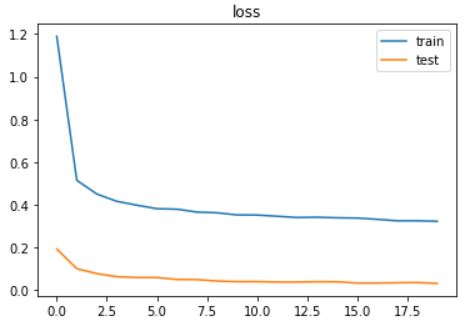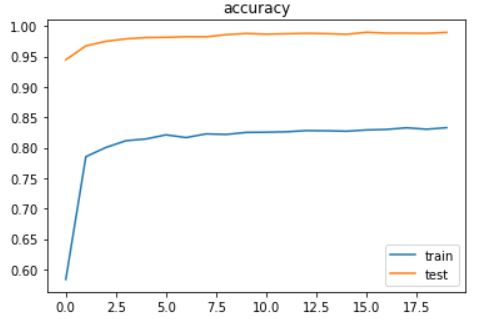Hi, Thanks in advance for looking into my question.
let me first describe the problem:
I have designed a very simple network to classify mnist dataset.
I have refactor as much as possible and make a clean code.
so everything ran smoothly and I would get good results on train and validation set.
until I read that If you are using dropout in your modules, then you have to use net.train() in training phase, and net.eval() when in testing.
so I added the changes in my code. now, I can’t explain test loss vs train loss.
train loss is fine, and is decreasing steadily as expected. but test loss is way much lower than train loss from the first epoch until to the end and does not change that much!
this is so weird, and I can’t find out what I am doing wrong.
for your reference I have put the loss and accuracy plots during epochs here:
following, I will upload my entire code.
imports
import torch
import torch.nn as nn
import torch.optim as optim
import torchvision
import torchvision.transforms as transforms
import matplotlib.pyplot as plt
Defining Network (Custom nn.Module)
class Flatten(nn.Module):
def forward(self, x):
batch_size = x.size()[0]
return x.view(batch_size, -1)
class Net(nn.Module):
def __init__(self):
super(Net, self).__init__()
self.conv1 = nn.Conv2d(1, 6, 3)
self.conv2 = nn.Conv2d(6, 16, 5)
self.maxpool = nn.MaxPool2d(2, 2)
self.relu = nn.ReLU()
self.flatten = Flatten()
self.dropout = nn.Dropout(0.25)
self.fc1 = nn.Linear(256, 64)
self.fc2 = nn.Linear(64, 10)
def forward(self, x):
x = self.maxpool(self.relu(self.conv1(x)))
x = self.maxpool(self.relu(self.conv2(x)))
x = self.flatten(x)
x = self.relu(self.dropout(self.fc1(x)))
x = self.dropout(self.fc2(x))
return x
Problem Class
this class, contains the logic of training and validation. this is just for cleaner code.
class Problem:
def __init__(self, net, criterion, opt, device):
self.net = net
self.criterion = criterion
self.opt = opt
self.device = device
def count_correct(self, y_pred, y):
return torch.sum(torch.argmax(y_pred, dim=1)==y)
def predict(self, X):
self.net.eval()
return self.net(X)
def train(self, trainloader, epochs, testloader=None, verbose=1):
losses = []
accs = []
test_losses = []
test_accs = []
for epoch in range(epochs):
self.net.train()
correct_predictions = 0
total_loss = 0
for i, data in enumerate(trainloader):
X, y = data[0].to(self.device), data[1].to(self.device)
y_pred = self.net(X)
self.opt.zero_grad()
loss = self.criterion(y_pred, y)
loss.backward()
self.opt.step()
correct_predictions += self.count_correct(y_pred, y).item()
total_loss += loss.item()
total_loss /= len(trainloader)
correct_predictions /= (len(trainloader)*trainloader.batch_size)
losses.append(total_loss)
accs.append(correct_predictions)
if testloader is not None:
test_loss, test_acc = self.validate(testloader)
test_losses.append(test_loss)
test_accs.append(test_acc)
if verbose == 1 and testloader is not None:
print("Epoch: {}; Loss: {}; Acc: {}; Test Loss: {}; Test Acc: {}"
.format(epoch, total_loss, correct_predictions, test_loss, test_acc))
elif verbose == 1:
print("Epoch: {}; Loss: {}; Acc: {}".format(epoch, total_loss, correct_predictions))
return losses, accs, test_losses, test_accs
def validate(self, testloader):
self.net.eval()
total_loss = 0
correct_predictions = 0
for i, data in enumerate(testloader):
X, y = data[0].to(self.device), data[1].to(self.device)
y_pred = self.net(X)
loss = self.criterion(y_pred, y)
total_loss += loss.item()
correct_predictions += self.count_correct(y_pred, y).item()
total_loss /= len(testloader)
correct_predictions /= (len(testloader)*testloader.batch_size)
return total_loss, correct_predictions
Creating Instances and Training the Model
# configurations
lr = 0.01
batch_size = 250
epochs = 20
device = torch.device("cuda") if torch.cuda.is_available() else torch.device("cpu")
# preparing train and test dataloaders
transform = transforms.Compose([transforms.ToTensor(), transforms.Normalize((0.5,), (0.5,))])
train_ds = torchvision.datasets.MNIST('/MyFiles/Datasets', train=True, download=True, transform=transform)
test_ds = torchvision.datasets.MNIST('/MyFiles/Datasets', train=False, download=True, transform=transform)
trainloader = torch.utils.data.DataLoader(train_ds, batch_size, shuffle=True)
testloader = torch.utils.data.DataLoader(test_ds, 2*batch_size, shuffle=False)
# creating instances
net = Net()
net.to(device)
criterion = nn.CrossEntropyLoss()
opt = optim.SGD(net.parameters(), lr, 0.9)
problem = Problem(net, criterion, opt, device)
# let model train
train_losses, train_accs, test_losses, test_accs = problem.train(trainloader, epochs, testloader, verbose=1)
# plotting test/train loss
plt.title('loss')
plt.plot(train_losses), plt.plot(test_losses)
plt.legend(['train', 'test'])
plt.show()
# plotting test/train accuracy
plt.title('accuracy')
plt.plot(train_accs), plt.plot(test_accs)
plt.legend(['train', 'test'])
plt.show()

